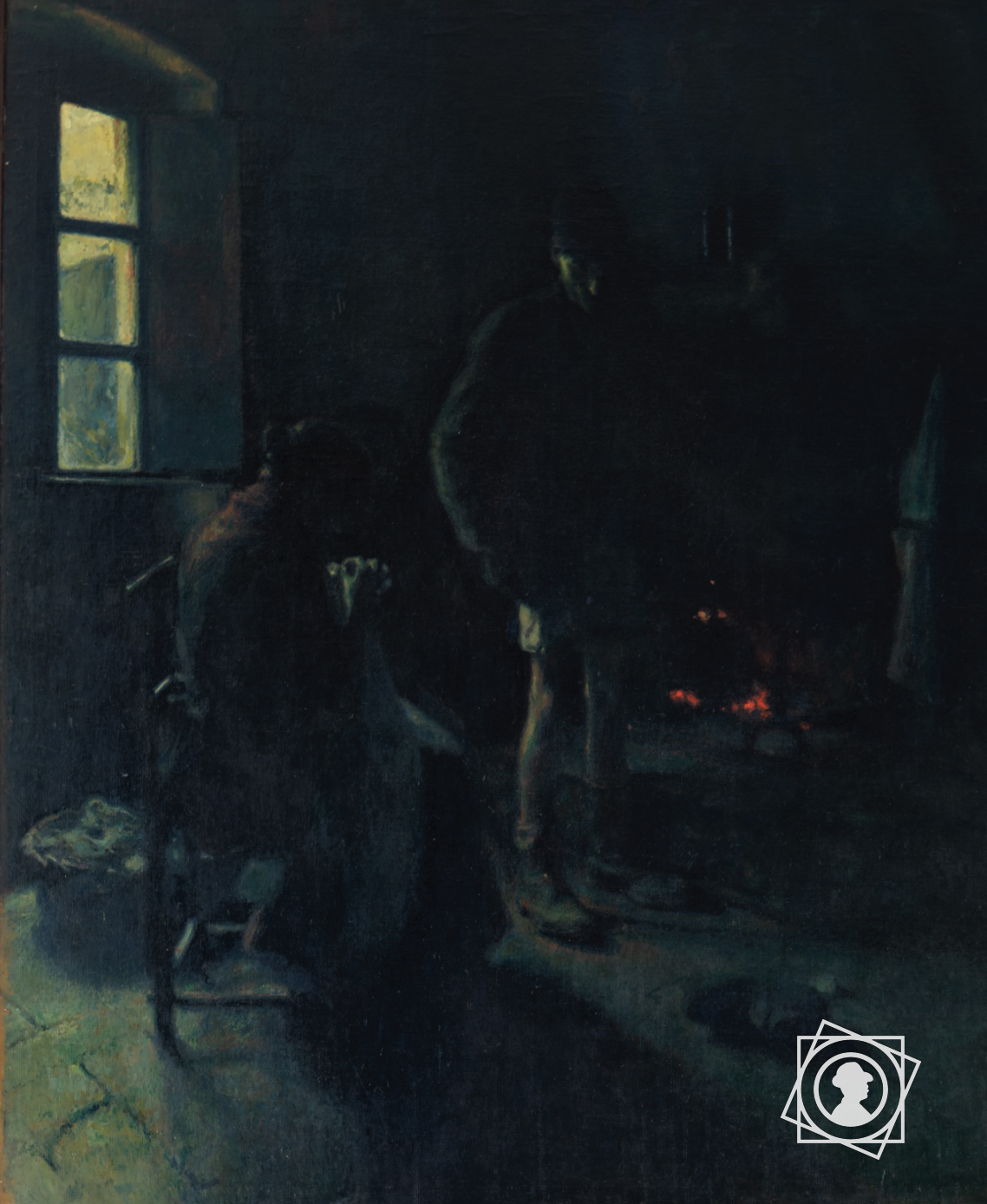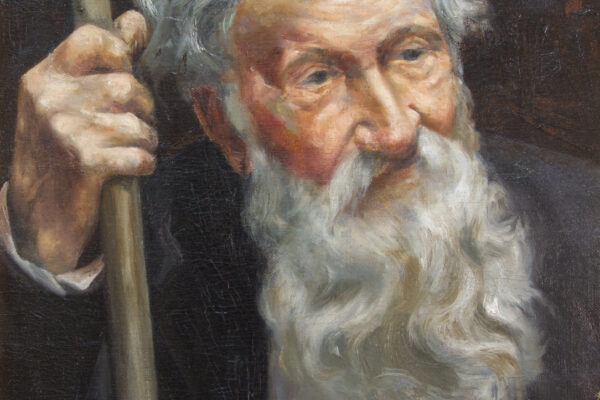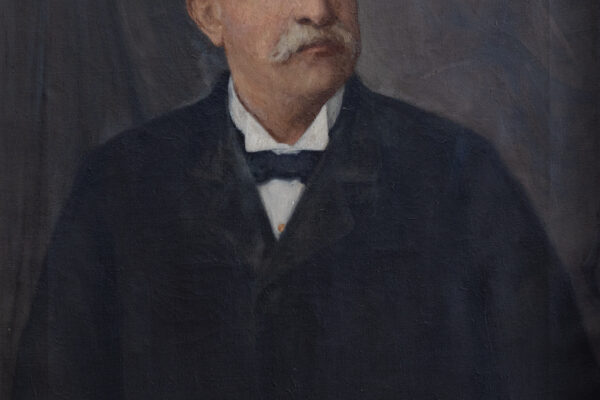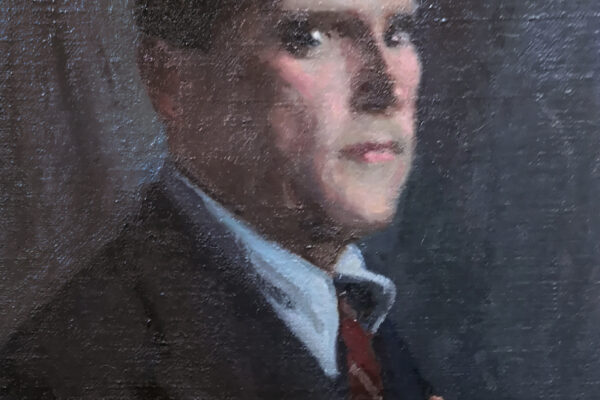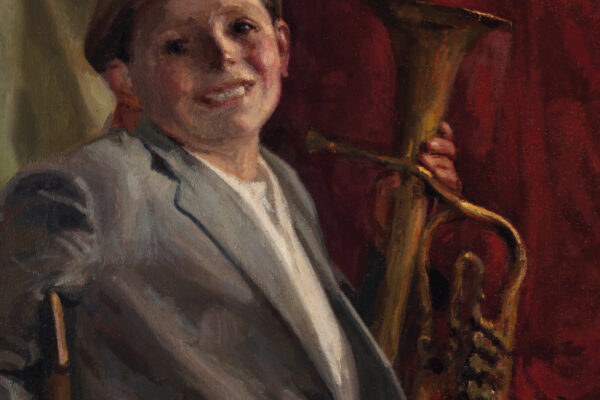Oil on canvas, 205×180 cm
Before 1914
Siena, Monte dei Paschi di Siena Collection
Exhibited in Rome in 1914, the canvas offers an image of life lived in total indigence, photographed with implacable realism: a man in his underwear is trying to get warm next to the embers in a fireplace, waiting for his wife to patch the only pair of trousers he owns. The interior in shadows is lit by the cold light of a winter dawn coming through the window, in contrast with the few reddish gleams about to extinguish any source of heat. The “resigned” protagonist stands in the centre of the scene like an anti-hero, and the painter presents, with no trace of rhetoric, his emaciated, trembling nudity as a real-life witness to the abject conditions of the poorest of his fellow townspeople.


